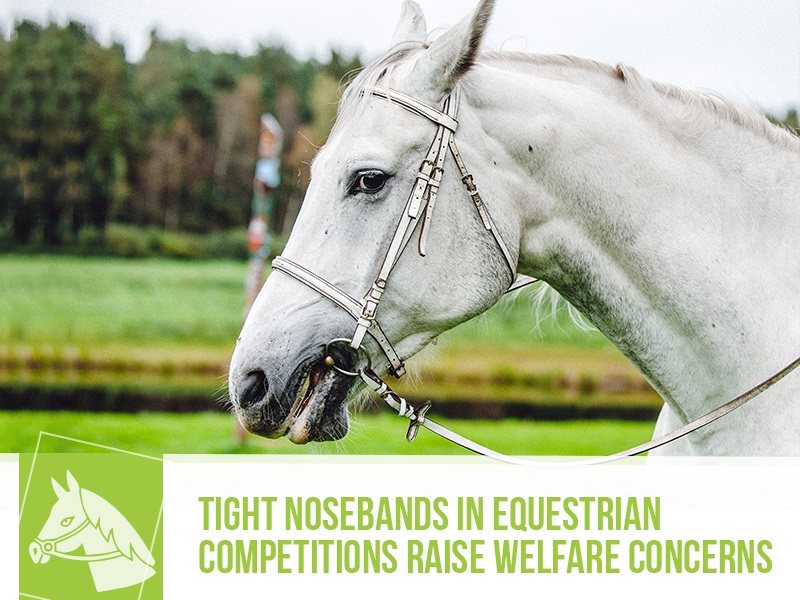
Tight nosebands in equestrian competitions raise welfare concerns

A recent study focused on collecting noseband data from 750 horses competing in Ireland, England and Belgium. What they found could have serious behavioural and physiological implications for horses and important consequences for the riders.
The noseband is the part of the horse's bridle that goes around the nose and jaw. It is recommended to keep some space between the animal's skin and the noseband. The general recommendation is to keep the noseband loose enough to allow space for 1,5 and 2 adult human fingers to fit under a fastened noseband.
However, according to a recent study only 7% of the horses had their noseband fitted to include the extra space for two fingers and more than half of all the nosebands tested were excessively tight (0.5 fingers or tighter). This can have negative consequences for the horses and for the riders.
Among the possible harmful consequences for the animals are discomfort, pain, stress, preventing normal oral behaviour and tissue damage. It also impacts how the riders are communicating with their horse, influencing the horse's present and future behaviour and performance.
Riders use the bridle and all its bits (the bit, the straps, and the noseband) attached to the reins to connect and communicate with the horse. Tight nosebands prevent the animal from opening its mouth to evade the pressure of the bit and this increases their sensibility to the bit. As a result many riders often rely on the tightening of the noseband to get a better response from their horse in terms of behaviour and performance on competitions, rather than taking the time to address the underlying issue causing their lack of response and putting the necessary time into training their horse to respond to the required action from a rein cue.
Previous studies have shown that excessively tight nosebands can cause a physiological stress response and compromise welfare. Ill-fitting tack is often the source of health issues and behaviour problems in horses. Ultimately, the use of excessively tight nosebands may be counterproductive in competitions and lead to long term behaviour problems.
Noseband tightness is barely regulated in equestrian events which contributes to the lack of data on this matter and on the possible consequences of resorting to very tight nosebands as an attempt to improve the horse's performance.
Image: "Gray dressage horse" by barnimages.com, was built upon and is licensed under CC BY 2.0
Would you like to know more about horses? Check our Equine Courses:
Equine courses
Published: 11 Apr 2017
Read the previous article: Keep your pets safe and have a great Easter!

